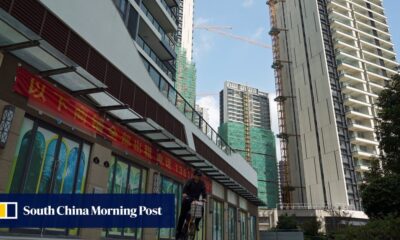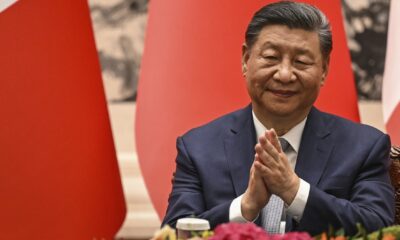Trade
Onshoring semiconductors is a chipped ambition
Author: Samuel Goodman, Washington DC
The disruptions caused by the COVID-19 pandemic have limited the supply and increased the cost of semiconductors. One of the clearest impacts of the chip shortage has been on the automotive sector. Re-establishing some semblance of normality within the semiconductor supply chain has, as a result of this and similar shortages, moved from theoretical discussions to a sharp-edged policy question.
The semiconductor value chain is simultaneously global and highly concentrated. Fabs — the large factories that create chips out of semiconductor wafers — exist in only a handful of countries. South Korean firms and the Taiwanese company, TSMC, account for most leading-edge chip manufacturing. Companies that don’t manufacture their own chips feel the effects of disruptions to the global value chain because of that market concentration. Natural or other issues that create disruptions can have outsized effects on firms up the supply chain.
Many countries have now moved to increase chip supply chain security by onshoring more semiconductor production capacity. China has long aimed to increase domestic manufacturing, while the US 2022 CHIPS Act contains provisions aimed to bolster domestic capacity. It will take years for the planned capital investments to bear fruit, and risks will remain even then.
Fabs are the single greatest expression of semiconductor production, but they are wholly dependent on other parts of the global supply chain. No fab can operate without access to specialised and often esoteric inputs. The concentration in Japan of suppliers of several critical chemicals used in semiconductor manufacturing led Tokyo to try to exercise leverage over Seoul in a political confrontation over wartime reparations in 2019.
The war in Ukraine has similarly threatened the global supply of several critical materials used to make chips. The response by some firms has been to diversify their supplies, but the necessary natural resources are not evenly distributed across the planet. The same constraints exist among the suppliers of semiconductor capital equipment. Only a few companies — primarily in Japan, Europe and the United States — produce the machines used at different stages of chip production.
There is precedent for the criticality of these nodes. The Soviet electronics industry lagged behind its competitors because there was a coordinated effort to keep them from accessing internationally state-of-the-art equipment. By the end of the cold war, the USSR was about a decade behind technologically.
Chip manufacturing requires myriad designers with access to libraries of intellectual property (IP). Some of the largest semiconductor companies don’t make any physical items themselves but send their IP to be made by fabs owned by other firms, often in other countries. Without this, firms can’t manufacture the leading-edge chips that power smartphones and other advanced devices.
Chinese firms ZTE and Huawei felt the impact of this once they lost access to US IP. Replicating these resources is difficult, as it requires a pipeline of talent from universities into the industry that feeds into an ecosystem of state-of-the-art research and development.
The urge felt by governments to invest in domestic semiconductor manufacturing is a natural instinct. But it will prove difficult, if not impossible, for the vast majority of countries to achieve complete independence based on their material limitations. Semiconductor investments take years, if not decades, to pay off.
Top-to-bottom onshoring is unlikely to mitigate supply issues in the short term, nor would it be feasible for all but the wealthiest states to even attempt. For most countries, a cost-effective way to reduce risk across supply chains could be to form more robust multilateral partnerships. A constellation of states with similar policy goals might be better positioned to shore-up shared bottlenecks and deficiencies.
Participation in such arrangements would require giving up their virtual monopolies over aspects of the supply chain. New sources of raw materials and additional manufacturing capacity spread across multiple countries would help prevent a disruption in one part of the world from shutting down manufacturing elsewhere. Enabling such diversification would require greater standardisation to ensure materials are compatible across the group.
Individual states could also analyse their supply chains for the points of greatest vulnerability. Such analysis would show where the requisite materials, capital and…
Trade
Self-Reliance and Openness: Core Principles of China’s Third Plenary Session

The Third Plenum communique from the CCP indicates a prioritization of stability and compromise in response to China’s economic challenges. It highlights the concept of Chinese-style modernization and establishes political guidelines for balancing regulation and market forces.
The CCP’s Third Plenum communique signals a focus on stability and compromise in the face of China’s economic challenges. It emphasises Chinese-style modernisation and sets political directions for balancing regulation and market forces. While not as groundbreaking as previous plenums, it acknowledges the importance of market mechanisms and technological self-reliance, aiming to address issues like high youth unemployment and private sector uncertainty. The communique seeks to navigate the complexities of global competition and domestic innovation, potentially reshaping global supply chains and trade dynamics. Overall, it presents a pragmatic blueprint for China’s economic future.
Source : Self-reliance and openness central pillars of China’s Third Plenum | East Asia Forum
Trade
Trade Prevails Over Political Persuasions in China-Germany Relations

China and Germany maintain a strong bilateral relationship, rooted in economic cooperation despite ideological differences. Recent visits and agreements focus on expanding trade and addressing mutual concerns, navigating challenges while nurturing ties.
Evolving Bilateral Ties
China and Germany share a strong bilateral relationship, rooted in history since 1972. This connection has seen moments of cooperation intertwined with periods of tension. German Chancellor Olaf Scholz’s April 2024 visit underscores Germany’s commitment to fostering this partnership, reflecting a mutual interest in maintaining economic ties despite ideological differences.
Economic Pragmatism
As the second and third largest global economies, China and Germany’s economic interdependence is crucial. Germany emerged as China’s primary trading partner in 2023, with trade values reaching €254.4 billion (US$280 billion). In response to global scrutiny, Germany has taken a balanced approach, emphasizing economic stability over political discord. This was evident during Scholz’s prior visit in November 2022, where his diplomatic tone contrasted with broader EU sentiments.
Facing Challenges Together
Despite increasing public skepticism in Germany regarding China’s global influence and human rights issues, both nations continue to seek common ground. Their October 2023 Joint Statement highlights intentions to pursue cooperation in areas like carbon neutrality and open markets. To navigate these complex terrains, Germany can utilize its institutional frameworks to enhance dialogue, while also considering supply chain diversification to reduce dependency on China. The intertwining nature of their economies suggests that, despite challenges, both countries will continue to prioritize their substantial trade relations.
Source : Trade trumps political persuasions in China–Germany relations
Trade
Fixing fragmentation in the settlement of international trade disputes

Fragmentation in global trade due to the lack of development in multilateral trade rules at the WTO has led to an increase in FTAs. The Appellate Body impasse has further exacerbated fragmentation, requiring a multilateral approach for reform.
Fragmentation in Global Trade
Fragmentation in global trade is not new. With the slow development of multilateral trade rules at the World Trade Organization (WTO), governments have turned to free trade agreements (FTAs). As of 2023, almost 600 bilateral and regional trade agreements have been notified to the WTO, leading to growing fragmentation in trade rules, business activities, and international relations. But until recently, trade dispute settlements have predominantly remained within the WTO.
Challenges with WTO Dispute Settlement
The demise of the Appellate Body increased fragmentation in both the interpretation and enforcement of trade law. A small number of WTO Members created the Multi-Party Interim Appeal Arbitration Arrangement (MPIA) as a temporary solution, but in its current form, it cannot properly address fragmentation. Since its creation in 2020, the MPIA has only attracted 26 parties, and its rulings have not been consistent with previous decisions made by the Appellate Body, rendering WTO case law increasingly fragmented.
The Path Forward for Global Trade
Maintaining the integrity and predictability of the global trading system while reducing fragmentation requires restoring the WTO’s authority. At the 12th WTO Ministerial Conference in 2022, governments agreed to re-establish a functional dispute settlement system by 2024. Reaching a consensus will be difficult, and negotiations will take time. A critical mass-based, open plurilateral approach provides a viable alternative way to reform the appellate mechanism, as WTO Members are committed to reforming the dispute settlement system.
Source : Fixing fragmentation in the settlement of international trade disputes






